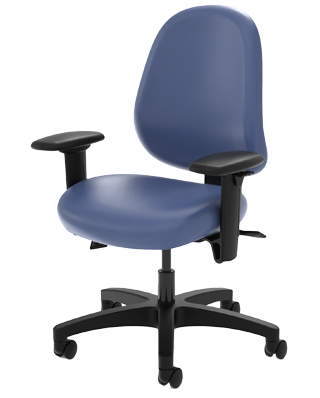THE NEED FOR PASSIVE PREPAREDNESS IN HEALTHCARE
In the aftermath of the arrival of Ebola on North American soil, many questions have been asked regarding a continually iterated word: prepared. Many U.S. healthcare facilities made headline news because of their lack of preparedness but in Canada, the need for proper preparedness was epitomized by closure of the Emergency Room at the Royal Alexandria Hospital in Edmonton. Despite the fact there was no risk for Ebola, Alberta Health Services shut down one of the city’s healthcare hubs. The resultant concern and worry led many to wonder whether the healthcare system could even be trusted.
Preparedness is one of – if not the most important – tenet in infection prevention. Without it, infections may enter and spread rapidly within an environment, such as a healthcare facility. Yet, this singular concept encapsulates an entire realm of action from the most basic forms of communication to the complexities of personal protective equipment (PPE). Being prepared is far more than a simple matter of following a widely disseminated pictogram and requires the involvement of the entire sector working together to ensure both healthcare workers and the public are safe.Extreme to every day challenges
There is little doubt Ebola epitomizes the extremes of infectious disease threats requiring preparedness. Yet, each and every day, healthcare faces a myriad of less deadly, but equally concerning pathogens for which proper preparation is invaluable.
Hospitals are forced to shut their doors due to these risks and lack of preparedness.
The names are all too familiar due to their continued ability to cause healthcare associated infections. They include Methicillin Resistant Staphylococcus Aureus (MRSA), Carbapenem-resistant Enterobacteriaceae (CRE), Norovirus and Clostridum Difficile.
Over the years of examination, experimentation and evaluation, one preparedness model has gained momentum. The method is passive in nature such that implementation requires no prior training or practice to ensure perfection. The rationale for its use is quite simple; by incorporating passive alternatives into an environment, protection is provided with no required action on the part of the workers present.A passive form of PPE
To accomplish an effective passive preparedness regimen, the mechanism of benefit should parallel and then go beyond an active means of preparedness. While seemingly odd at first glance, the reasoning is fairly straightforward. While several examples exist, such as computerized networks for harmonized information sharing and the use of mobile devices for communication, the easiest example to appreciate in the context of healthcare involves the use of coatings as a means of passive PPE.
In an active PPE environment, workers are presented with a number of options such as gloves, gowns, masks and eye protection. Regardless of the equipment, the overall goal is to provide an impermeable barricade such that the individual is safe and will not end up as a carrier. In passive PPE, a similar chemical barrier is used to coat surfaces such that there is no chance a potential infectious agent can accumulate and spread.
Equipment should have PPE and the best PPE is to have coatings on furniture.
At this point, passive PPE can become superior to its active counterpart. As seen in examples of healthcare workers becoming infected with Ebola, the presence of gaps or seams in active PPE can lead to skin exposure and then to infection. These cases reflect a lack of proper active preparation for working in such high-risk environments. But as passive PPE requires no such training, it will continue to provide the same level of preparedness and subsequent protection each and every day without any concern.
In a healthcare environment, passive PPE is a viable option for many reasons. First and foremost is the protection of inanimate objects from contamination and potential infection spread. Looking back at the Edmonton situation, the closure was due to a need for a thorough cleaning of all furniture. With passive PPE manifested through a coating on the chairs and tables, the need for a massive cleaning operation would be averted; all that would be needed would be a wipe down with an effective disinfectant.
The reasoning for this closure may have been unique but the practice of shutting down wards is not. Numerous similar outcomes have been caused by the lesser nefarious pathogens norovirus and C. difficile. In all cases, the reason for taking a ward out of operation is the same – a need for active and in-depth cleaning of surfaces. Each time this happens, costs increase due to lost productivity and the reputation of the institution suffers. With the implementation of passive PPE, these problems can be minimized if not entirely avoided as surfaces are protected and can easily be rendered safe.
It is necessary to take the highest level of protection.
The Role of IC Plus in Passive Preparedness
IC Plus Upholstery™ is personal protection equipment for your capital investment in furniture. In healthcare environments, furniture should be cleanable, non-porous, void of seams and should not support microbial growth. When applied to compatible fabrics IC Plus creates a seamless, impermeable barricade strong enough to withstand multiple daily cleanings with hospital-grade disinfectants without cracking, leaving infectious agents with nowhere to hide.
In addition to superior cleanability, furnishings coated in IC Plus upholstery solution are cleaned much faster than non-coated furnishings making IC Plus a preventative measure that pays for itself in terms of every day reduced cleaning time. It has the potential to assist hospitals in lessening the time required for, or possibly eliminating the need for shut downs due to suspected or actual infections.


